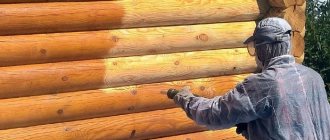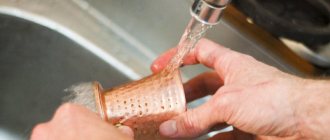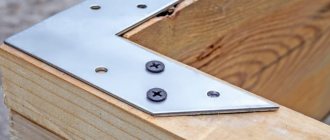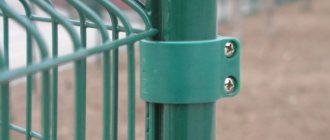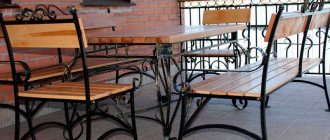There are wooden objects in any home. This could be furniture, window frames, parquet, tools. Over time, the quality of the material deteriorates and the appearance ceases to be attractive. To restore beauty and shine, it is necessary to apply a protective and restorative coating. The ideal result can be achieved through wax. The best manufacturers have filled the market with popular models for every taste. The product differs in functionality, characteristics, degree of gloss, and area of application.
Chic, shine - beauty
What can and should be polished, with what and in what way are exciting questions for those who want or are forced to take up this difficult but fascinating task. Polishing wooden products - brand new walls or a restored countertop - performs an aesthetic and protective function (see also the article “Underlay for a wooden floor: purpose, types and installation features”).
Pros and cons of varnish
Take a closer look, you are surrounded by many things made of wood, the treated surface of which shines or glows matte:
- decorative crafts;
From knight to queen - everything is varnished
- decorative cutting boards, spoons;
- walls/floors;
- furniture;
- laminate (there are also such fans).
But polishing wooden products is not always appropriate and safe, this includes:
- spoons, if they are intended for food and not decoration;
- kitchen knives - a very smooth handle is more difficult to hold, and if dropped, the decorative layer will inevitably crack;
- gun stocks (for the same reason).
The stock is impregnated with linseed oil
Finishing agents
The choice of varnishes is huge and each of them has its own specifics:
- luxury furniture is coated with alcohol - their price is high, the most luxurious varnish is shellac;
- alkyd – wear-resistant, used to cover parquet;
- acrylic – fragile, requires re-application;
- polyurethane and alkyd with the addition of fungicides are good for outdoor use;
- water-soluble are remarkable for the absence of harmful fumes;
- solvent-based, resistant to detergents, but does not ozone the air;
- oil - cheap, “healthy”, but gives the surface a yellowish color;
- nitro varnishes dry the fastest - from 15 to 25 minutes, give a strong shine and are very durable.
A few words about wax
As already mentioned, the use of varnish or polish is not always advisable - for dishes and children's furniture it is better to use drying oil or wax paste. It’s great that it’s not difficult to prepare wax paste at home, and the main ingredient can be bought from “honey cakes” at the bazaar.
The wax paste can be made liquid or solid at will, depending on the amount of turpentine - solvent. In the classic version, the components are mixed in a 1:1 ratio. The wax is heated in a water bath, but a microwave is also suitable, then turpentine is poured into it with constant stirring until a homogeneous consistency.
Note! The procedure for preparing the material yourself at home will require increased safety measures. Be sure to have ventilation and no sources of fire - turpentine has a pungent odor and is highly flammable.
Wax and almond oil in a 1:1 ratio
If you choose any oil as a solvent, you will get an absolutely harmless substance, suitable for treating even children’s furniture. The proportions will be slightly different: wax and olive oil – 2x6/8; with jojoba oil – 1:3.
The manufacturing instructions will be slightly different:
- grate the wax;
- mix with oil;
- heat and stir.
Wood polishing wax is used to restore color on old items and enhance it on new ones, as well as to remove worn stains. If you add orange or jasmine essential oil at the mixing stage, a magical aroma will linger in the room for a long time.
How to choose products
Which product is best to buy depends on many factors. The main selection criterion is the operating conditions of wooden structures. If we are talking about flooring or furniture products, then you need to give preference to models for interior work. Sometimes you have to wax products that are constantly or temporarily in the fresh air, exposed to rain and snow, wind and direct sunlight. Then experts advise paying attention to products intended for outdoor use. This type of coating is heat-resistant, will withstand any bad weather, and has increased UV protection.
It is not difficult to determine where to buy products. You can visit a specialized retail outlet. There, a professional manager will introduce you to a wide range of domestic and foreign-made goods, tell you about new products being produced, tell you what they cost, help you decide on the final option, and calculate the required volume of products.
You can order products online in an online store, while saving a little on the price. However, based on a review of user reviews, instead of expensive wax, you can get a budget, low-quality Chinese counterfeit or handicraft product from a careless supplier.
Three, screwing, varnishing
Polishing different types of surfaces - untreated, painted or varnished - has its own nuances. You will definitely need special substances and devices to achieve good results. In general, the process involves applying several layers of varnish, followed by drying and sanding each but the last.
Sand each crevice
A job done brilliantly
Before polishing varnish on wood, you need to prepare polish, pumice, a swab/velor roller (ideally a spray gun), and denatured alcohol.
- Polish is thickly applied to a dry varnished surface with a swab and polished with pumice until shiny.
- After 3 days of drying, a second layer follows to level out roughness and is left to dry for 5 days.
- The third portion of polish is applied.
- Polishing with alcohol is carried out to a mirror shine.
Read also: Message on the topic of ferrous and non-ferrous metallurgy
Old beautiful furniture definitely needs, if not repair, then restoration of the varnish layer, which is wiped out and becomes covered with bald patches.
The restoration process includes the following surface treatment steps:
- Removing the old varnish layer using ammonia, denatured alcohol, turpentine or other solvent.
Note! Polishing varnish after painting involves the use of toxic substances - do not forget to protect yourself as much as possible. Don't neglect gowns, gloves, goggles, and respirators or gauze dressings.
Health comes first
- Processing with coarse and then fine-grained sandpaper.
- Rub in the filler (in a circular motion).
- Treat with stain several times, allowing each layer to dry completely.
- Direct polishing of varnish on wood - with wax, varnish (in several layers, each is dried, sanded; do not sand the last layer).
Technologies from time immemorial
I wonder how, in ancient times, woodcarvers, carpenters, and architects managed to preserve their products from moisture and drying out? The secrets of distant ancestors have survived to this day and naturally fit into modern production.
It has long been known how to polish wood with wax, which gave the product a soft, calm glow and was guaranteed to protect it from the vagaries of the weather.
The waxing procedure looks like this:
- The material is applied to the wood with a cloth or brush.
- The wax dries out slightly.
- Rub it in until the grains disappear.
- Final polishing with a clean cloth until shiny.
There are no problems with wax - scoop it up and rub it in
The second way to polish wood without harm to health is to use natural drying oil, the main component of which is linseed oil. It is simply rubbed in until it stops being absorbed. It does not give shine, but protects the surface, making its color more saturated (see also the article “OSB on a wooden floor: preparation and installation of the coating”).
Waxes with oils
To provide the tree with the most reliable protection, it is impregnated with oil before applying wax. Professional formulations can significantly simplify the processing process.
For example, products from OSMO contain oils and waxes, so they retain all the properties of a natural product:
- Penetrates well into the wood structure and provides deep protection;
- Even after damage to the protective layer, moisture penetration inside is limited;
- Preserves the elasticity of wood and reduces the risk of drying out;
- Prevents the development of mold and pathogens;
- Protect the tree from waterlogging.
In addition to vegetable oils and waxes, the composition includes water-repellent additives. Processing allows you to enhance the natural color of wood or give it a light shade with the addition of pigments.
In conclusion
Every day, throughout our lives, we subject things to tests - touches, impacts, placing them in the scorching sun or a damp terrace. Often, thanks to a decorative coating, it is possible to preserve/restore furniture, decorative elements or objects of art for a long time.
If you want to get super gloss on your furniture, the video in this article will reveal all the secrets of this process.
Wood, as one of the most popular materials for the manufacture of furniture, requires a special finishing that will emphasize its natural beauty and extend its service life .
This process is called polishing. Of course, it is difficult to perform , takes a lot of time, and all actions must be carried out very carefully. Despite the difficulties, polishing wood allows you to create a glossy surface , the main thing is to know the subtleties of the process.
Rating of the best colored waxes
Biofa - 2087
If you decide to purchase a product under 2000 rubles, take a closer look at this model. The product is intended for covering ceilings, various decorative elements, and walls with a protective layer. Belongs to the category of wax-water emulsions. No solvent is used in production. The choice of shades is impressive. You can choose any color scheme. After complete drying, the base can be polished. This will create an amazing shine. Impregnation belongs to the category of antistatic. Suitable for interior work. The film begins to form within an hour, until it dries completely you will have to wait 4 hours. Consumption – 16 sq.m/l. The smell is neutral. Restores the original appearance of yellowed wood varieties. Tinting provided. Complete safety is noted, and therefore the substance is used to restore the attractiveness of children's toys. The surface is matte.
Purchase price – 1369 rubles.
Biofa wax – 2087
Advantages:
- practicality;
- ease of application;
- restores the original appearance of products;
- safety;
- environmental cleanliness;
- absence of chemical components;
- drying speed;
- reliability;
- long service life.
Flaws:
- none.
Decorwachs Borma 4585/4586
Impregnations from an Italian manufacturer. The production is based on Carnauba wax and natural material. Scope of application: protection of wooden structures located indoors, creation of Decape and Shabby effects, formation of a protective layer. Suitable for application are untreated substrates, as well as surfaces that have been pre-treated with oil or varnish. It looks like a paste. The range includes 6 shades. Drying is carried out in 10 - 30 minutes. Excess is removed with a napkin.
The average cost is 964 rubles.
wax Decorwachs Borma 4585/4586
Advantages:
- reliability;
- safety;
- functionality;
- ease of use;
- versatility.
Flaws:
- not found.
Sigma – Colored wood wax
Product manufacturer: Sigma - color. Has excellent characteristics. Impregnation can protect structures from mold and mildew, as well as ultraviolet radiation. Has high water-repellent qualities. Can be used for external and internal work. Glazing composition. Penetrates deeply into any wood species. Apply with a brush. Made exclusively from natural ingredients.
Purchase price – 800 rubles.
Sigma wax – Colored wood wax[
Advantages:
- ease of application;
- pleasant aroma;
- modest spending.
Flaws:
- none.
What is polishing
As a result of polishing, the wooden surface retains its natural color and acquires a mirror shine . To polish, you need to apply a special compound called polish to the wood several times. Unlike alcohol-based varnish, the polish contains three times less resins, which makes it possible to obtain a thinner and more transparent decorative coating.
The technology for creating beautiful textures requires high-quality surface preparation, in particular grinding and removing lint and dust particles . Then the wood is treated with a primer emulsion, polished, and polished as a final step.
Why do you need to wax wood?
The bee product has the priority right to be called wax. The rest of the products are artificial products of the chemical industry. Furniture and any wooden surfaces are subject to various physical impacts. This can cause minor damage (scratches, cracks) and lead to loss of presentation. Wood tends to release vapors from the internal structure of the material into the atmosphere, which causes cracks and drying out.
Since ancient times, people have polished floors and furniture with beeswax. A layer of greasy product masked small cracks and prevented the depletion of the wood mass due to evaporation. The process of treating surfaces with wax is called waxing. For many decades there has been an increase in the need for bee products, which have become scarce. As a result, new compositions were invented that were superior in properties to natural wax.
Wood polishing compounds
The market offers a fairly extensive range of products designed for processing wooden products. You can purchase the composition ready-made at any specialized retail outlet; if desired, it can be made at home using varnish or wax.
To prepare a working mixture for polishing wood with your own hands, you will need crushed shellac resin in the amount of 60 g and 0.5 liters of alcohol. The components are mixed in a glass container, closed tightly with a lid, and stirred periodically so that the shellac is completely dissolved. After which the working fluid is filtered and poured into a clean container.
Read also: Float water level sensors for pump control
For finishing children's furniture and dishes, it is more advisable to use drying oil or wax paste . It is prepared from wax, turpentine (solvent) in a 1:1 ratio. First, the main component is heated in a container in a water bath, and then a solvent is added to it. To achieve a uniform consistency, the mixture must be stirred constantly. A felt swab is suitable for working with wax. This is a safe type of wood polish that does not emit harmful substances and is absolutely harmless.
If there is varnished wooden furniture in the house and it needs to be refreshed, then you can use wood polish in an aerosol or a liquid product. In this case, compositions with silicones give a good effect.
Note! Furniture wax for polishing is applied to wood without a varnish coating.
You can prepare a polish from olive oil (2 parts) and lemon juice (1 part or a little less). The products must be mixed and applied from a spray bottle to varnished furniture or by dipping a cloth into the polish.
A polish is also prepared from turpentine and beeswax , taking them in equal quantities, heating them in a water bath and mixing. The furniture is polished with even movements until it shines, paying attention to all the curves and nooks and crannies.
Scope of use and properties of the material
The product from domestic and foreign manufacturers is a protective material. A universal remedy. Has high performance properties. The main purpose is the processing of wooden bases. Used to protect:
- wooden lathing installed on roofs and walls;
- wooden floors, roofs, walls;
- wooden buildings, facades of structures built in the open air;
- panels, ceilings, furniture.
The substance is used not only in medicine and cosmetology, but also for industrial purposes. The composition of beeswax is as follows:
- fatty acid;
- esters;
- hydrocarbons.
The main quality of the material is water repellency. When the temperature rises above 20 degrees, the substance becomes less dense. Color does not have any effect on the properties of the product.
The main characteristics of the product include:
- protection from excessive humidity;
- fire resistance;
- improving the appearance of wood products;
- increasing the strength of the material;
- appearance of shine on the surface.
Stages of work
The wood polishing process consists of several stages. In order for the surface to look perfect after polishing, it must first be sanded, then covered with a layer of primer and only then thoroughly polished.
Surface grinding
This procedure does not cause any particular difficulties, but it takes a lot of time to give the tree a perfect look.
The surface must be free of chips, burrs, cracks and other defects. First, the wood is treated with sandpaper No. 46-60, then with abrasive material No. 80-100 and finally sanded with sandpaper No. 140-170.
After sanding, the wood becomes clean, smooth, without protruding fibers or lint .
Padding
At this stage, the prepared wood is primed using shellac polish and a linen swab . It is not recommended to use cotton or wool fabrics for these purposes; they leave behind small fibers and lint, which are clearly visible on the polished product.
To apply the primer, put a small amount of polish on a swab and begin rubbing in different directions. With this approach, small cracks and pores are most effectively filled, and impregnation occurs better.
Note! First, make a smear on a test surface. The polish should dry quickly and not form bubbles. If there is a lot of it, then the excess is removed by wiping the test surface.
The primed product is left to dry for 2-3 days . After the varnish has dried well, it is necessary to sand the wood with a fine-grained abrasive material. The resulting dust is removed with a rag.
Polishing
After priming, the so-called polishing is performed. A couple of drops of vegetable oil are applied to a tampon made of linen fabric (this facilitates easier sliding) and a little liquid shellac polish is poured . For work, you can further dilute the shellac-based composition (usually an 8% solution is used).
Place the tampon from the side and make smooth circular movements . Polishing is carried out in three passes , where each layer must dry, sand with fine-grained sandpaper and be cleaned of dust. A slight gloss can only be seen after applying the third layer of the product.
Polishing
To polish the wood, that is, to obtain the perfect shine, you should treat the surface of the wood with a fine-grained abrasive material (sandpaper) soaked in vegetable oil when the third layer of polishing is completely dry . After this, drip a little vegetable oil and polish onto the tampon.
The strength characteristics of a polished coating can be improved by applying not one, but several layers . At the end of sanding, it is recommended to treat the product with a soft cloth soaked in a solution of polish and water. Excess oil can be removed by rubbing the wood with ethyl alcohol . At the same time, the surface becomes smoother.
Considering that the quality of polishing is affected by compliance with all the subtleties of the process, you should not reduce the number of layers applied and the time for drying . Otherwise, this will lead to a deterioration in the decorative qualities of the coating.
Read also: Do-it-yourself protective cover for emery
Polishing of varnished wood must be carried out in strict accordance with the technological process; only then can you obtain the most effective, fairly durable surface with a mirror shine . If you have no experience in this area, then it is recommended to first practice on small samples and then move on to more expensive products.
- 2 tablespoons wax
- 6-8 tablespoons olive oil
- Beeswax (50 mg)
- Jojoba oil (150 ml)
- Additionally possible: extracts + vitamin E
Application of wax mastic
Wax-based mastic is the main product for caring for parquet floors. Parquet - both expensive and ordinary wood species are treated with beeswax-based mastics. The mastic is applied manually using a rag in a circular motion. The parquet is polished manually or with a grinding machine and a polishing wheel.
If the parquet is new, then the floors are treated with mastic 2-3 times. Between processing processes, technological breaks are taken to allow the next polishing layer to dry completely. The final coating is rubbed until the floor is shiny and glossy.
Cooking methods
It's time to talk about how to prepare oil-wax at home and what components are required for this. For greater convenience, we will give the mass fraction of the ratio of ingredients. Follow this recommendation and you will be able to prepare a high-quality product for treating wood floors.
Wax, turpentine and rosin
This composition is ideal for furniture because it allows you to create a special protective film, thanks to which dust does not harm the surface of the wood in any way, and a characteristic coating does not form on top.
This became possible thanks to the addition of turpentine. It makes the composition not so thick, which simplifies application and allows you to work with the surface as much as necessary.
